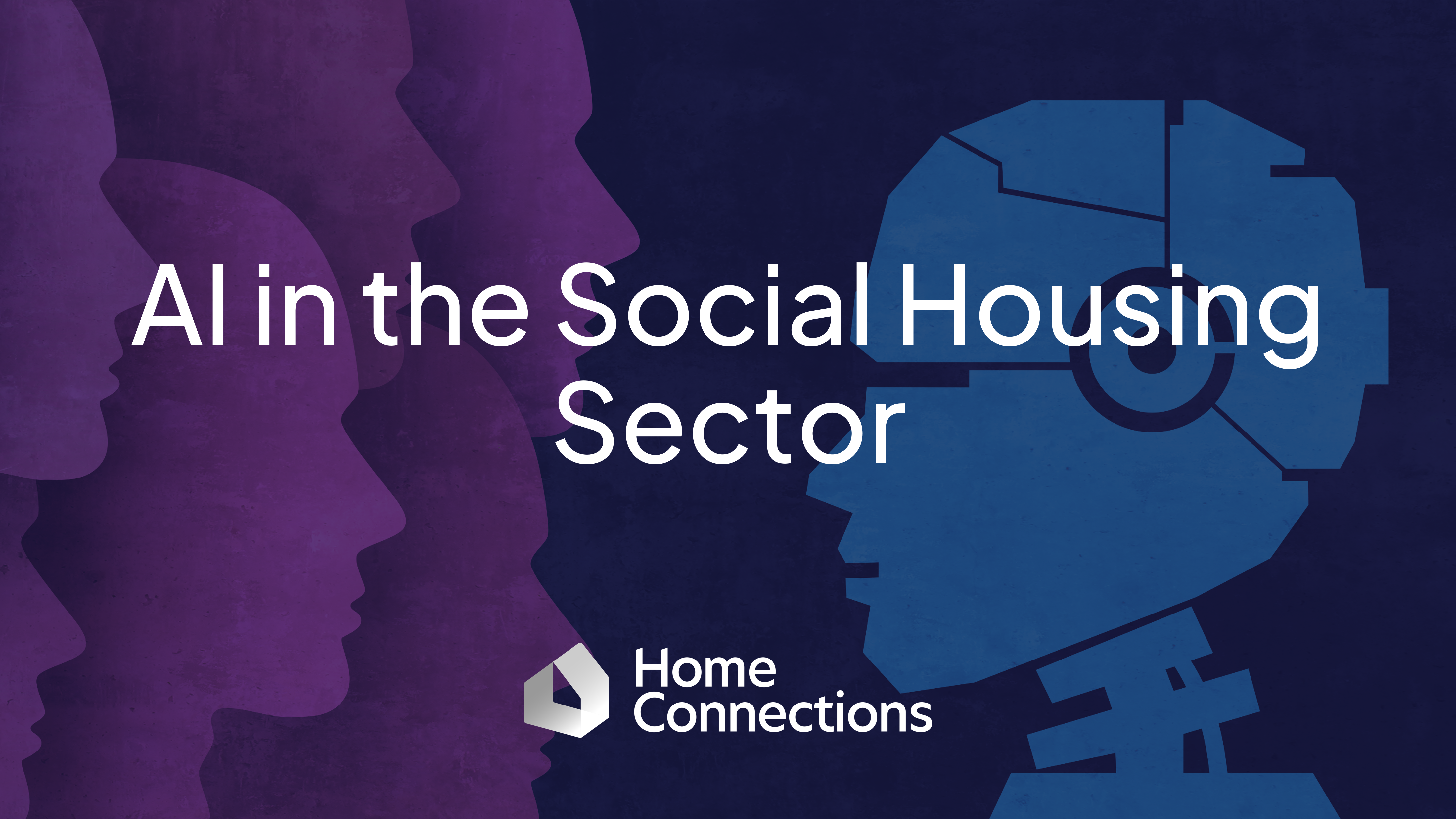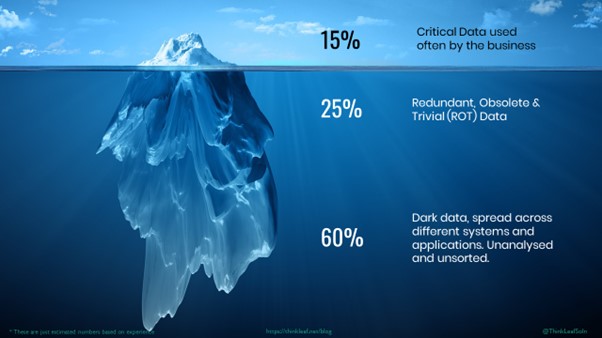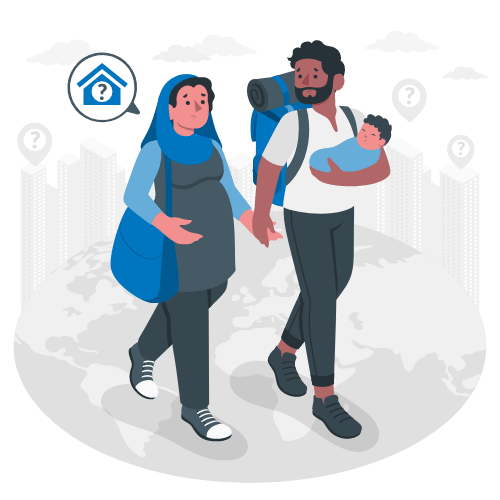Home Connections will be exhibiting at CIH Scotland's Housing Festival 2024

We are excited to announce, Home Connections will be exhibiting once again at this year'sCIH Scotland's Housing Festival!
Scotland's biggest housing event has been reimagined so that housing professionals from across Scotland and the UK can come together for thought-provoking sessions with plenty of innovation and collaboration. You can see the full programme here.
CIH Scotland's Housing Festival 2024
Date: 05-06 March 2024
Location: SEC Glasgow, Exhibition Way, Glasgow, G3 8YW
Time: 08:30 - 16:00
Already a CIH member? Secure your free place: https://www.cih.org/events/shf-2024
Where can you find Home Connections?
You’ll find us at Stand 28. Come and visit Home Connections to discuss the current housing challenges facing the sector and how we can collaborate to ensure your housing system is able to meet these challenges head-on, through flexibility and high functionality.
Can you #CrackTheCode?

Visit us at Stand 28 to have a chance to win an Instax Mini Link Smartphone Printer or an Echo Pop Smart Speaker With Alexa!
All you need to do is guess the unique combination code to open the safe and unlock one of the prizes.
How is the housing sector is going to utilise Artificial Intelligence

Artificial intelligence (AI) is one of the most exciting and rapidly evolving fields of technology today. But what exactly is AI, and what impact will it have on the social housing sector?
This blog post is adapted from the presentation delivered by Aashna Vishal Rachh, Data Analyst at Home Connections during our Connections Forum Scotland event, titled "AI in the Social Housing Sector"
What is AI?
According to IBM, an American multinational technology corporation, AI utilizes computers and machines to replicate the problem-solving, decision-making, learning, reasoning, and understanding natural language capabilities as observed in the human mind.
Subsets of AI
How does it do that? These machines are computational systems that are powered by algorithms and models such as Machine Learning, Deep Learning and Neural Networks which are subsets of AI that enable them to improve their performance on a specific task over time.
These subsets are specialized branches that address particular challenges.
Machine Learning
In Machine Learning, the machine learns from the data provided to them and identifies patterns to be able to make predictions or decisions based on that learned knowledge

For example, Amazon uses machine learning to recommend products to a specific customer based on what they’ve looked at and bought before.
Deep Learning
Deep Learning is a specific approach within Machine Learning that learns and makes sense of complex patterns in data and that’s why requires more data to be able to produce more accurate insights and predictions unlike machine learning, which requires less data. Enterprises generally use deep learning for more complex tasks, like virtual assistants or fraud detection.
Neural Networks
Neural Network is the backbone of deep learning algorithms which is inspired by the structure and functioning of a human brain as shown in the diagram.
AI vs. Machine Learning vs. Deep Learning vs. Neural Networks: What’s the difference? - IBM
Applications of AI
Natural Language Processing
There are many applications of AI which use these algorithms. Out of those many, I am going to talk about 2 of them. Natural Language Processing which is concerned with giving computers the ability to understand text and spoken words in much the same way human beings can, utilizes deep learning and neural networks to do so.
There’s a good chance you’ve interacted with NLP in the form of voice-operated GPS systems, digital assistants, speech-to-text dictation software and customer service chatbots. ChatGPT is a well-known example of a Natural Language processing tool.
What is natural language processing (NLP)? - IBM
Computer vision
Computer vision, which aims to teach machines to interpret and understand visual information from the world, similar to how humans perceive and make sense of visual data also utilizes deep learning and neural networks. This can be used in applications such as image recognition and classification, object detection as you see in CCTV cameras, Tesla cars and many more.
What is not AI?
Having spoken about what AI exactly is, many people mistakenly consider other technological areas as purely AI.
Automation
For instance, Automation is often confused with AI. Automation is fixed on repetitive, and follows predefined instructions, and after it performs its job, it thinks no further. You can think of Automated e-mails sent to customers as an example: If you program a robot to do a set of instructions such as navigate to a designated location, pick up the object on the table and return to the same position. The robot will follow the same set of instruction and think or do nothing further unless AI is involved in it.
Whereas AI can make predictions learn from the data, take decisions based on the data provided to them and adapt to UNSEEN situations.
Data Science
Although data science and AI are closely related, they are not the same. data science is a broader field that includes extracting valuable insights from the data using a lot of techniques such as machine learning which is a common factor of AI and data science. But AI involves creating intelligent systems, learn from experiences and improve performance with time.
Internet of Things (IoT)
Next, Most of the IoT i.e. Internet of Things items are made with sensor technology connected to the internet. People often mistake “automatic” doors or “smart” televisions to be purely AI. But that is not the case. “Smart” gadgets are an integration of both IoT and AI.
For instance, a “smart” home security camera is made up of sensor technology as well as AI but is not purely AI. It uses sensors to sense movement and AI to detect the object. However, AI and IOT is considered as a very powerful combination together which helps organizations achieve their objectives.
Things that are called ML/AI that really aren’t - Functionize
Data Science and Artificial Intelligence: Learn Differences - SimpliLearn
Machine Learning or Automation: What’s the Difference? - Business News Daily
AI in the Housing Sector
According to IBM, updated July 2023, about 35% companies globally, are using AI, and another 42% are exploring the technology.
AI can give your business a competitive advantage. Integrating customised AI models into your workflows and systems, and automating functions such as customer service and cybersecurity, can help a business meet customers’ expectations, both today and in the future.
How can AI be used in the social housing sector?
In the housing sector, AI could be used to make many processes easier.
Analytics
For instance, it can be used to analyse historical information such as past allocation data, social housing demands, economic and demographic trends to predict future need for social housing. This could make a great contribution towards eventually reducing or even eradicating homelessness.
Customer facing chatbots
Virtual AI assistants such as chatbots can offer a convenient way for the users to raise support queries, ask FAQs or ask questions about your websites. Chatbots play an important role in assisting users 24/7 and in non-working hours, freeing up the employees for other important tasks. Voice assistants such as Alexa have also made things easier and faster for the users.
Staff facing chatbots
Many organisations have started using ChatGPT Enterprise to ease up the work of case workers for example, who manually recorded and noted down each user case they handled. The Speech-to-text recognition feature called Whisper in ChatGPT Enterprise, could be first used to convert the spoken words into text, and the text could be used to summarize their case in ChatGPT assisting the case workers to pick and prioritise the actions they need to take next to manage the user’s case.
Social Housing Speed Read: Artificial Intelligence - a new dawn for social housing - Ward Hadaway
How AI can assist councils with social housing allocations - LocalGov
Introducing ChatGPT Enterprise - OpenAI
AI at Home Connections
Currently, at Home Connections we are implementing a chatbot in one of our services. There are a lot of AI tools such as Microsoft Azure Services and ChatGPT which allows customisation of the chatbots according to your customers’ needs. We aim to customise our chatbot using the Microsoft Azure AI Services according to what our website offers and user needs.
We, at Home Connections envision to make ethical use of AI so as to work towards one of our most important goals of eradicating homelessness.
Ethics in AI
It's incredibly important to keep the information safe when using AI in social housing or in any other sector for that matter.
Data privacy and security
Since AI relies heavily on data, we need to make sure that the data is handled securely, and nobody can use it without permission. Protecting the data is a big priority to make sure people's privacy is respected and to keep everything secure. While handling sensitive data such as age, gender, disability, etc.
Data de-identification, a method of dynamic data masking, which involves the separation of data from the individual it’s linked to, by eliminating or altering sensitive values without changing the underlying data, needs to be carried out. This facilitates easy and more secure sharing of data with third parties.
Unbiased practices
Developing AI models requires careful attention to prevent biases that may lead to unfair outcomes. Clear and understandable AI outcomes are vital. AI should not be seen as an opaque system with hidden processes usually known as a “black box”. Building trust with stakeholders relies on transparency and accountability.
Transparency and responsibility
Organisations should confirm that AI vendors include KPIs focused on fairness, accuracy, and transparency, sharing their results regularly. In this way, companies can minimize biases in AI systems. The link given below on data ethics framework can be useful for you while navigating data ethics issues.
Navigating the Ethical Landscape of AI in Social Housing - Mobysoft
Minimising AI bias: Best practices for organisations - British Council
What is Data De-identification and Why is It Important? - Immuta
Providers need to consider rightsizing approaches as a long-term solution to address supply shortfalls

Under and over-occupation have been highlighted as an issue within the housing sector for decades. Occupancy issues have been exacerbated by the undersupply of social housing, leading to limited housing choice, and mobility, for social housing tenants over and under-occupying. Rightsizing can be a solution for providers to address demand and occupancy issues within their existing stock.
Under-occupancy in social housing
In total, 9.3 million households under-occupy their property (39% of all households). In social housing, 10% of social renters under-occupy their homes. In contrast, only 3% of households (732,000) in England are over-occupied. Of these, 44.5% live in the social rented sector (making up 8% of social rented households, or 325,000 households).
Ageing population and under-occupancy
The UK has an ageing population, with Census 2021 confirming there are more people than ever in older age groups.[1] 16% live in the social rented sector[2] and are the largest age group in the social rental tenure (28% of all households).[3]
Within general needs social housing, 40% of under-occupied homes are over-65 households, compared to 4% of under-occupied properties that are under-35.[4] Figures from the Office of National Statistics in 2018 highlight that the number of people over the age of 65 is forecast to increase by 27% by 2035. By 2050, one in four people in the UK will be in 65+ age group.[5]
Under-occupying households downsizing their homes would significantly free up larger housing and could reduce the number of over-occupied households. Whilst there is demand from the 65 and over age group to downsize, the current number of people downsizing does not reflect this. In light of this, the drivers for households and individuals to rightsize are important for organisations to understand and consider.
Social housing supply and demand
The social housing sector is shrinking as a proportion of all dwellings. Data on dwellings by tenure shows that the number of homes available for rent from social housing providers in England has fallen by 6.4% since 1997, from 4.3 to 4.1 million homes. It has shrunk from 21% of all dwellings in England in 1997 to 17% in 2022.[6]
Changes in supply have affected the number of properties available to let, with the number of new social lettings in 2021/22 (267,000) falling 38% from a recent peak in 2013/14 (396,000 new lettings).[7] Local authority waiting lists for social housing in England are growing, with 19,000 households joining from 2021 to 2022, a 2% increase.
Over time, there has been a corresponding increase in over-occupation in social housing. In the last decade, EHS data shows a 31% increase in number of social housing households over-occupying, from 249,000 in 2011/12 to 325,000 in 2021/22.[8]
Sources
- ONS (2022) Voices of our ageing population: Living longer lives
- Department for Levelling Up, Housing and Communities (2022) English Housing Survey 2021-22 Headline Report. (accessed: 15/12/2022)
- Ibid
- Drew, L. (2022) Right sizing could be the answer to the housing crisis. Inside Housing, 13th July.
- ONS (2018) Subnational population projections for England. (accessed: 02/12/2022)
- Altair analysis of Department for Levelling Up, Housing and Communities Live Table 104, Dwelling stock: by tenure, England (historical series)
-
DLUHC (2023) Social Housing Lettings: April 2021 to March 2022
-
Altair calculation from English Housing Survey 2021-22, Annex Table 1.24: Overcrowding, by tenure, 1995-96 to 2021-2
What is the solution?
It is evident that demand for social housing is outstripping supply. Local authorities and housing associations will therefore need to consider alternative approaches to addressing demand, such as rightsizing.
The difficulty for social housing providers is the time and resource required to match households and create an effective chain through moves that might take place through rightsizing schemes, such as mutual exchanges. Therefore, ensuring the elements of a provider’s rightsizing package address the needs and preferences of its residents is essential to maximising the efficiency of the solution.

Written by Will Morley, Consultant at Altair Ltd
Home Connections develop new mutual exchange tracking system with House Exchange

In the world of housing, collaboration and efficient resource allocation are vital to meet the diverse needs of residents. We are thrilled to announce MEx Connections, a cutting-edge solution designed to streamline the mutual exchange process for housing providers. In this blog, we will explore the key features and benefits of this innovative system, created in collaboration with leading non-profit mutual exchange system, House Exchange.
Simplifying the mutual exchange process
The traditional mutual exchange process can be complex and time-consuming, often involving extensive paperwork, countless Excel spreadsheets and inefficient communication channels. MEx Connections simplifies this process by offering an innovative online system, where you can record and track all mutual exchange transactions at ease.
Real-time updates
An intuitive dashboard will provide you with a snapshot of all mutual exchange transactions, showing their real-time status. MEx Connections features an automatic region countdown indicator to help you hit targets. From tenancy checks, inspections, exchange process review and confirmation, you can track the status of each exchange effortlessly.
Secure and confidential communication
Our system prioritises data security, offering secure communication channels for you to exchange messages, upload documents, and other relevant information directly with tenants. The tenants will have access to a communications portal, available 24/7, where they can upload their documents and keep track of their exchange request.
We have robust privacy measures in place so you can use your system with peace of mind, knowing your data is protected and will not be transferred out of the UK under any circumstances. Home Connections is fully accredited by ISO 9001 and ISO27001 and Cyber Essentials Plus certified.
In-depth reporting feature
MEx Connections also provides an in-depth reporting feature that enables you to build a wide range of reports, using fields from the application form and other filters. These reports can allow you to identify trends, make data-driven decisions, and continuously improve your mutual exchange processes.
100% non-for-profit
MEx Connections was designed by two organisations that share a core value: not-for-profit. Any income generated are fully reinvested in our companies, software and solutions that transforms the housing sector for the better and allow partners to deliver efficiencies against their housing objectives.
Conclusion
With the new Mutual Exchange Connections tracking portal, you will revolutionise how to process mutual exchange transactions and foster more efficient resource allocation. By leveraging intelligent automation, real-time updates, secure communication channels, and insightful analytics, you will stay ahead of the game, shortener home swapping processes and enhance tenancy satisfaction. Contact us today to learn more about our Mutual Exchange Tracker System and how it can benefit your organisation.
Ready to open the doors for tenants who wish to move home?
House Exchange is the largest not for profit mutual exchange system on the market. They specialise in facilitating introductions between council or housing association tenants who are looking to swap their home. Almost two million residents access their website for free nationwide. Find out more about House Exchange and how they can help you increase mobility for your tenants.
5 reasons why you should migrate your website to LocalGov Drupal

Local authorities play a vital role in ensuring that people from all walks of life have access to affordable and quality housing, amongst many other services. However, for councils to reach their target audience and provide them with the information they need, they need to have an online presence that is both informative and user-friendly.
Building a council website involves more than maintaining content quality and accuracy. Your site will require compliance with accessibility requirements, data protection measures, rank high in search engines, all whilst limiting development costs.
That's where LocalGov Drupal comes in.
What is LocalGov Drupal?
LocalGov Drupal is a content management system (CMS) specifically designed for local government websites. It is an open-source platform that provides councils a range of tools to create and manage their online presence effectively.
Built by councils for councils, the platform is publicly owned and managed by a community of developers, content designers and councils across the UK and Ireland. The community work together to design, develop and share Drupal code to help one another build more efficient websites. Currently, 30 local authorities integrate the LocalGov Drupal community.
What are the benefits of moving your site to LocalGov Drupal?
With LocalGov Drupal, you can build websites that are easy to navigate, visually appealing and accessible to a wide range of users.
Here are the top benefits you will get if you move your corporate website to LocalGov Drupal:
-
A highly customisable platform
With LocalGov Drupal, you can tailor your website to meet your specific needs. You can choose from a wide range of themes and templates, making it easy to create a website that reflects your brand identity and help you offer a seamless user online experience. The platform was designed to be modular: new features and functionality can be added as and when needed.
-
Designed for collaboration
Moving to LocalGov Drupal means access to a collaborative community. It allows councils to work together with their colleagues and partners to create and manage their online presence. By joining the LocalGov Drupal community, your organisation will benefit from shared resources, ideas and expertise.
-
More accessible experiences
Built with the user in mind, LocalGov Drupal is an accessible platform that can help you enhance your website and meet the needs of users with disabilities. The platform can help you meet the WCAG 2.1 AA accessibility requirements with several modules and new features that might become available through the user community.
-
Incredibly secure platform
Aiming to meet the highest security standards, LocalGov Drupal carry regular security updates to ensure the platform remains safe and secure. Cyber security is essential for local authorities, who need to ensure that the personal information of their tenants and clients is kept safe and secure.
-
Speedier development time
Creating a new council website can take up to a year, sometimes longer. By switching to the LocalGov Drupal framework, you can benefit from faster development turnarounds by using of templates, built-in features and much more. At Home Connections, we are flexible and agile enough to turn small and large projects around efficiently and cost-effectively.
Are you ready to migrate your corporate website to LocalGov Drupal and provide better, more engaging online experiences? Home Connections can support you with the web design, implementation and migration of your site. Let us help you build the seamless online experience your users deserve.
How to transform data into intelligence

The alchemy of turning data into intelligence
I will always remember the first time I experienced it. I was working for Camden Council, and we were at the beginning of a large data transformation project analysing the data from the Parking department to find some interesting insight for management.
I remember the analyst walking over to me with a look of satisfaction as he showed me a world map where he had charted all the countries where Camden officers had issued parking fines for cars with international licence plates. Most of them were in Ireland and France, some in Spain and Holland, but the most interesting insight was a large cluster of fines in Afghanistan.
The map provided the wow moment. We presented this analysis to the leadership team in the Parking department who immediately took action. They changed the drop-down in the mobile application and carried out training to emphasise the importance of entering accurate data in the system. In 3 months, their recovery for international parking fines had increased significantly.

Don't choose the first option in the dropdown! (Source: Get My Parking)
The power of storytelling when presenting data
I love this story because it exemplifies the power of turning data into intelligence. It shows the importance of data quality, and how the business system’s interface may negatively impact it. How many times have we seen officers entering a resident’s telephone number in the wrong field or adding comments where the address should go? Is it the fault of the housing management system? Or should colleagues be more aware of the impact of not entering data correctly?
The Camden Parking example also shows the importance of telling a story with maximum impact. We could have shown a bar chart with Afghanistan as one of the highest bars, but it wouldn’t have had the same impact as showing a world map with a huge cluster of fines issued to cars from a country 3,500 miles away in a different continent.

Bring a little bit of excitement to your analysis like Hans Rosling. (Source: Nagens Nyheter)
It’s hard to know whether senior management would have taken the same action and achieved the same results if we had chosen a more muted approach to sharing the data insight. What we know is that it was memorable, and the Director kept talking about it with other senior leaders in the organisation, helping us gain traction with the programme.
Challenges and opportunities in housing
The lessons from those early days of rolling out a data transformation programme are still valid today in housing. There is more data to analyse now than ever before, as digital transformation grows in the sector.
There is also more data being generated that is not being analysed. What experts call ‘dark data’ may account for over 60% of an organisation’s data by some estimates. The use of Internet of Things (IoT) devices to monitor homes is also significantly increasing. These devices generate real-time data which may be used to intervene proactively and prevent expensive repairs, which impact on resident satisfaction and may end up escalating to complaints.

Dark data could be a powerful source of insight. (Source: Think Leaf Solutions)
The challenge with this explosive growth in data over the last 10-15 years is that some of the problems that existed before have grown exponentially. Data quality, for example, remains a big barrier to turning data into intelligence. The regulator has emphasised its concerns around the data integrity from providers. It’s common that staff don’t trust the data in systems and prefer to keep their own spreadsheets or other sources which only compounds the problem.
Data has also become more complex, and the technical expertise needed to extract data and provide insight has become more difficult to find. Many other sectors are using data to drive value and improve their products and services. With significant successes in areas such as e-commerce, banking, and insurance, it is difficult for housing organisations to compete for talent in the current market.
Good training programmes and upskilling existing staff are essential to empower those who understand the business to explore and analyse its data. When combining the passion for public service with the power of data, the potential is thrilling.
Making data-based decisions
Perhaps the biggest challenge I have seen is cultural. There are many leaders in housing who have worked as housing officers and deeply understand the job. They have years of experience and use this to make decisions and challenge colleagues when things are not working. Unfortunately, this huge strength is also a weakness as they are not used to accessing data to inform their decisions.

Educating the HiPPO is the biggest challenge. (Source: Tom Fishburne)
This is quite telling when senior leaders join housing from other industries and ask for data. In many cases, the data isn’t there, or things are not documented and live in people’s heads. This is in my opinion, the biggest change that will open the gates to data transformation in housing. Once leaders experience the power of turning data into intelligence and how that intelligence can help make better decisions and lead to better outcomes, the transformation will gain energy and pace.
Data professionals have a key role to play to lead this transformation. It’s never been a better time to start turning your data into intelligence.
Our housing needs software offers integration with powerful business intelligence tools to support you find meaningful insights within your data and help you make better business decisions. Book a demonstration today!

By Arturo Dell, Associate Director of Data and Technology at Home Connections
The Dispute Service (TDS) and Homefinder UK: Partners in Securing Accommodation for Refugees

The Dispute Service [TDS] is a not-for-profit organisation that provides a range of services for the private rented sector, including tenancy deposit schemes, mediation services and the tlyfe app for tenants.
Recently, TDS has been working alongside Homefinder UK, a national mobility scheme, which is working with the Home Office to help refugees find suitable and long-term housing within the private rented sector (PRS).
Securing a home for refugees
Homefinder UK is a non-profit organisation that is dedicated to helping those in need find appropriate housing. Working with the Home Office, they are looking for larger properties that can cater to refugee needs. Meanwhile, the Refugee Council has set up a private rented sector scheme and a woman-only housing project to help new refugees find suitable housing and avoid homelessness.
TDS is asking all our agents and landlords with suitable homes to come forward and offer properties to let to participants in the Homefinder UK scheme, to help provide housing for the refugees.
Homefinder UK is not just about finding a house for refugees but also helping them find employment to sustain their rent payments. But unfortunately, the current housing shortage, particularly in congested areas such as London, is making it even more challenging for refugees to access private rented accommodation. Together, we can help refugees find a safe and secure home and begin the journey to rebuild their lives.
Homefinder UK is now offering private rental properties
Homefinder UK can now access private rental properties and help to provide refugees with additional move-on options. The properties benefit from 12-month Assured Shorthold Tenancies (AST) that can then be renewed or converted to rolling one-month tenancies.
How can private landlords help?
TDS and Homefinder UK are looking for committed private landlords that can offer:
- Large properties to cater for large families
- LHA rents
- Long-term tenancies of at least one year
Homefinder UK receives referrals directly from local authorities. Their case managers will complete all references and checks on the household to ensure the landlord’s property is matched to the right family. You will have a named account manager at Homefinder UK through the tenancy letting process and they will discuss incentives and fees. Contact Homefinder UK to find out more.
Trusted, Easy, Deposit Protection
The Tenancy Deposit Scheme, the only not-for-profit government-approved tenancy deposit protection scheme in the UK, is the largest (by value) in England and Wales protecting over 1.6m deposits.
Trusted by agents and landlords, your deposits will be safe in the UK’s longest-running scheme. Protect your tenants’ deposits for free in our Custodial scheme or get the lowest rates for landlords or agents in our Insured scheme.
We provide an impartial mid-tenancy conciliation and mediation service as well end-of-tenancy dispute resolution service, both free of charge. The TDS Academy is available for expert-led workshops, and we run regular webinars to keep you up to date.
TDS is backed by RICS, Propertymark and NRLA.
For more information visit our website. We have an information lounge full of helpful guides, templates, case studies and the latest TDS news.

Written by Steve Harriott, Chief Executive of The Dispute Service Ltd.
Six major housing trends to look out for in 2023

2022 was an intense year for housing, and it doesn't seem things will slow down in 2023. New reforms and measures and a switch in focus are underway. Are you preparing yourself for the changes? Are you looking to reinforce your commitment to putting tenants at the heart of your services in the new year? The six areas listed below are a starting point:
1. It will be all about the tenants

- Gather information about tenants' satisfaction
- Keep properties in good repair and safety;
- Effectively handle complaints and promote respectful and helpful engagement
- Manage neighbourhood responsibly
The Regulator of Social Housing (RSH) will collate the measures to produce an overall satisfaction score. How effectively do you collect data to understand your customers and the support they need?
2. Housing quality under the magnifying glass

With the Housing Ombudsman saying that the damp and mould cases are dominating its casework, the attention will continue to be focused on social housing quality and how we can fix issues of damp, mould, leaks and cold housing.
The Housing Ombudsman asked for a zero-tolerance approach and for landlords to adopt a dedicated damp and mould policy.
The pressure to ensure social housing properties meet the high standards that residents deserve is not going away.
The Welsh Government, for example, has written to all social landlords asking for urgent assurance and details about how they have responded to the lessons learnt after the tragic death of Awaab Ishak.
3. Maximising board representation

Racism, ethnic diversity and representation sparked debate last year and will continue to be a big area of discussion in 2023.
The new Chartered Institute of Housing (CIH)'s presidential campaign, In My Shoes, led by the new CIH president, Lara Oyedele, will be around racial diversity in the housing sector. The goal is to challenge the sector's complacency regarding ethnic diversity. Read her interview for Inside Housing here.
Recruiting the right people will be fundamental as much as ensuring the community you serve is represented at the senior level in terms of ethnicity and background. Is the leadership in your organisation proactively taking the necessary steps to become more in tune with its customers' wants and needs?
4. Data ownership - ensuring data quality and integrity

In line with points 1 and 2, a key priority for housing providers this year will likely be assessing the quality and integrity of their data. Is your data trustworthy and clear enough to make well-informed decisions?
In light of the new Social Housing regulation, housing providers need to assume that there's room for improvement in their procedures, especially in complaints handling. How robust and accurate is your data in tracking your performance against set targets?
Poor quality data in government (and in business) leads to failings in services provided, poor decision-making and an inability to understand how to improve. Here is a great resource to follow if your goal is to improve your data quality.
A Business Intelligence tool can help you make data-driven decisions to improve your tenants’ lives, by building a clearer picture of your data. Create customisable reports across all areas of your housing system and set them to run regularly, so your team can operate at maximum efficiency. Request a demonstration today.
5. Rent cap on social housing

Social rents in England are set to be capped at 7% from April next year in an attempt to protect social housing tenants from the impact of the cost of living crisis. Sector leaders, however, raised concerns about how the cap will impact housing providers' capacity to invest in homes and services for tenants.
In Scotland, a rent-freeze and an eviction ban were implemented until at least the end of March 2023. However, the Scottish government is not planning to impose any rent restrictions on social landlords for the next financial year.
6. Are we on track to end homelessness by 2024?

2023 will need to see urgent and immediate action if the government intends to meet its commitment to end rough sleeping in England by 2024.
The latest report from the All-Party Parliamentary Group for Ending Homelessness (APPGEH) has outlined five top recommendations the Government should take forward to end all forms of homelessness in England up to 2024 and beyond. View the full report.
How accurate are your rough sleeping figures?
Our Homelessness Reduction Act software, hope, can help you improve your data collection, management and reporting on rough sleeping through the Rough Sleeper module. You can also extract data quickly and in real time through a built-in report builder tool.
Join us in January for our next Connections Forum Scotland event!

Join us to review options for supporting your customers in these financially challenging times
What more can you do to support tenants, housing applicants and domestic abuse survivors as we brace ourselves for the impact of the cost-of-living crisis?
If you are exploring more options, join us for our next Connections Forum Scotland, held on the 23rd of January. This hybrid event will explore welfare support, available tech tools and other options available to best support your customers.
Additionally, find out more about the Revive Scotland project, launched in collaboration between Homefinder UK and Wheatley Group to rehouse women experiencing or at risk of homelessness due to domestic abuse. Revive Scotland recently won the 'Excellence in housing innovation' award at the Scotland Housing Awards 2022.
Attend this webinar to hear from:
- Nicola McQuiston, Letting and Homelessness Lead at Wheatley Group, on Improving the customer journey with a seamless housing integration system
- Scott McKinven, Client Support at Entitledto, on Simplifying the UK’s complicated benefits system to help individuals on the road to financial recovery
- Robby Ogilvie, UX/UI Designer at Lightning Reach, on Connecting individuals to the support they need, seamlessly, quickly, and securely
- Andrea Williams, Project Coordinator at Revive Scotland (Homefinder UK/Wheatley Group), on Delivering a fresh start for domestic abuse survivors
Join this event in-person or online
We are happy to be holding the Connections Forum Scotland as a hybrid event. Online, you can join the event via Zoom. In-person*, the event will be held at the following address: 25 Cochrane Street, Glasgow, G1 1HL. We will also hold a 30min complimentary lunch break at the end of the event for those who attend the in-person session.
Please select your preference for in-person or online on the sign-up page.
*Please note: In-person reservations are limited and will be allocated on a first come, first serve basis
Join us on Thursday 26th January 2022,10:00 – 12:00. Register for free, either in-person or online using the this link.
New social housing report: Minding the Gap

Our new report brings in-depth analysis of property demand data for 50,000 social housing properties advertised through Home Connections' choice-based lettings systems for the past three years. Produced in collaboration with Campbell Tickell and the Policy Institute at King's College London, the report explores the emerging trends and patterns in social housing as we move on from Covid-19.
Social housing supply and demand - the big picture
As one of the very few studies into social housing, the report offers a unique insight into the magnitude of the housing emergency. It offers evidence that a national and robust investment in social housing building is needed now more than ever.
"The most important use for this report is the fresh evidence of the ongoing extent to which the demand exceeds supply" - Jon Slade, Director at Campbell Tickell
In this report, you will find:
- Information about where the social housing supply in England fails to meet demand
- The changed levels of demand and supply year on year
- The types of properties receiving the highest bids and where they are located
- Recommendations to address the mismatch between the supply of and demand for social housing
Emerging trends
This current report expands on the findings from our previous report by investigating whether trends that were established during the pandemic have persisted or changed, as well as any new trends that may have emerged in the last year, including:
- Increased demand for social housing in the South-West
- Significant increase in demand for studio properties
- Reduction in demand for higher price properties year on year
“The cocktail of current crises – war in Ukraine, rising energy costs, steep inflation – may lead to increased demand on social housing in the coming years. A worrying prospect as housing teams across the UK already face immense pressure. This research report is intended to form part of the debate on how these improvements can be identified and implemented” - Ninesh Muthiah, Founder & CEO of Home Connections





